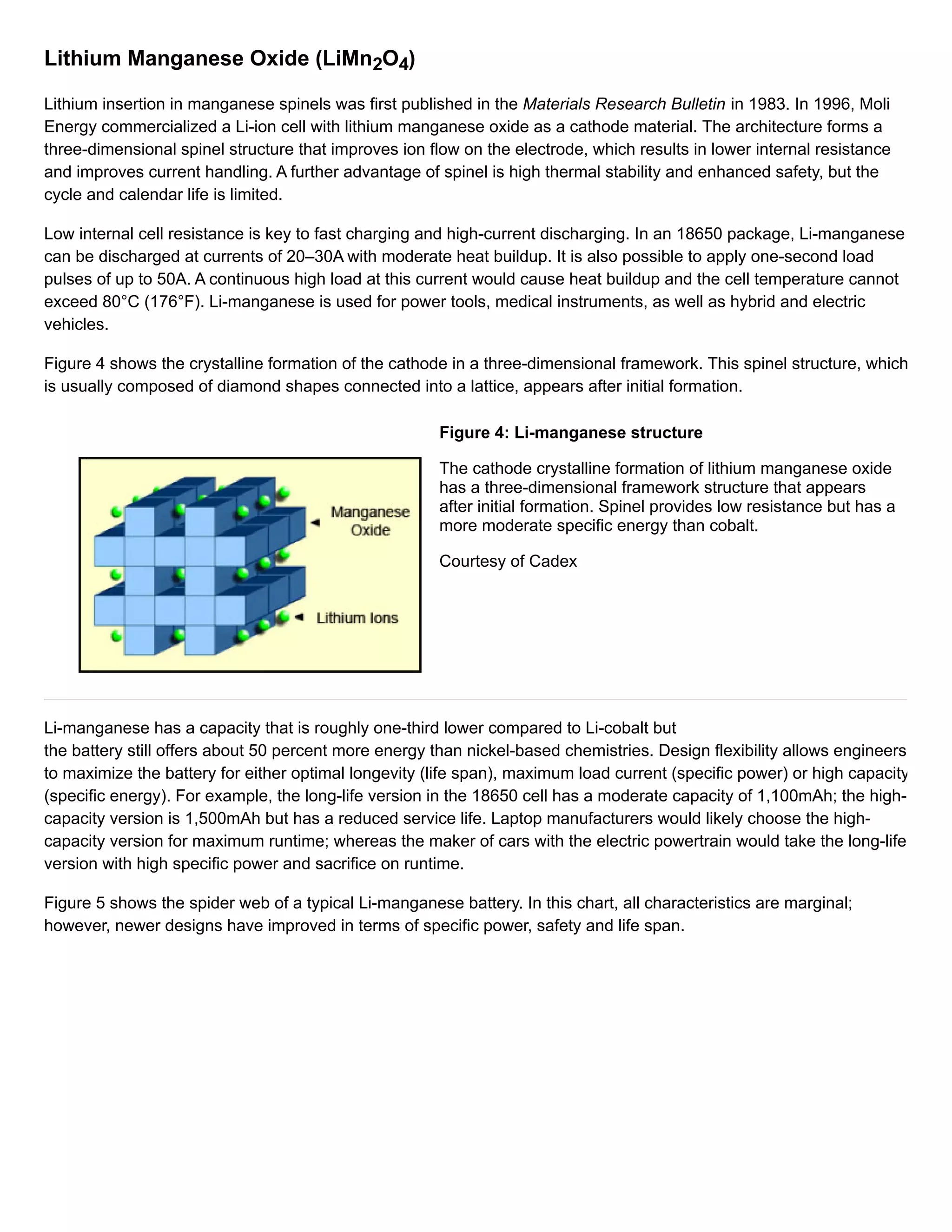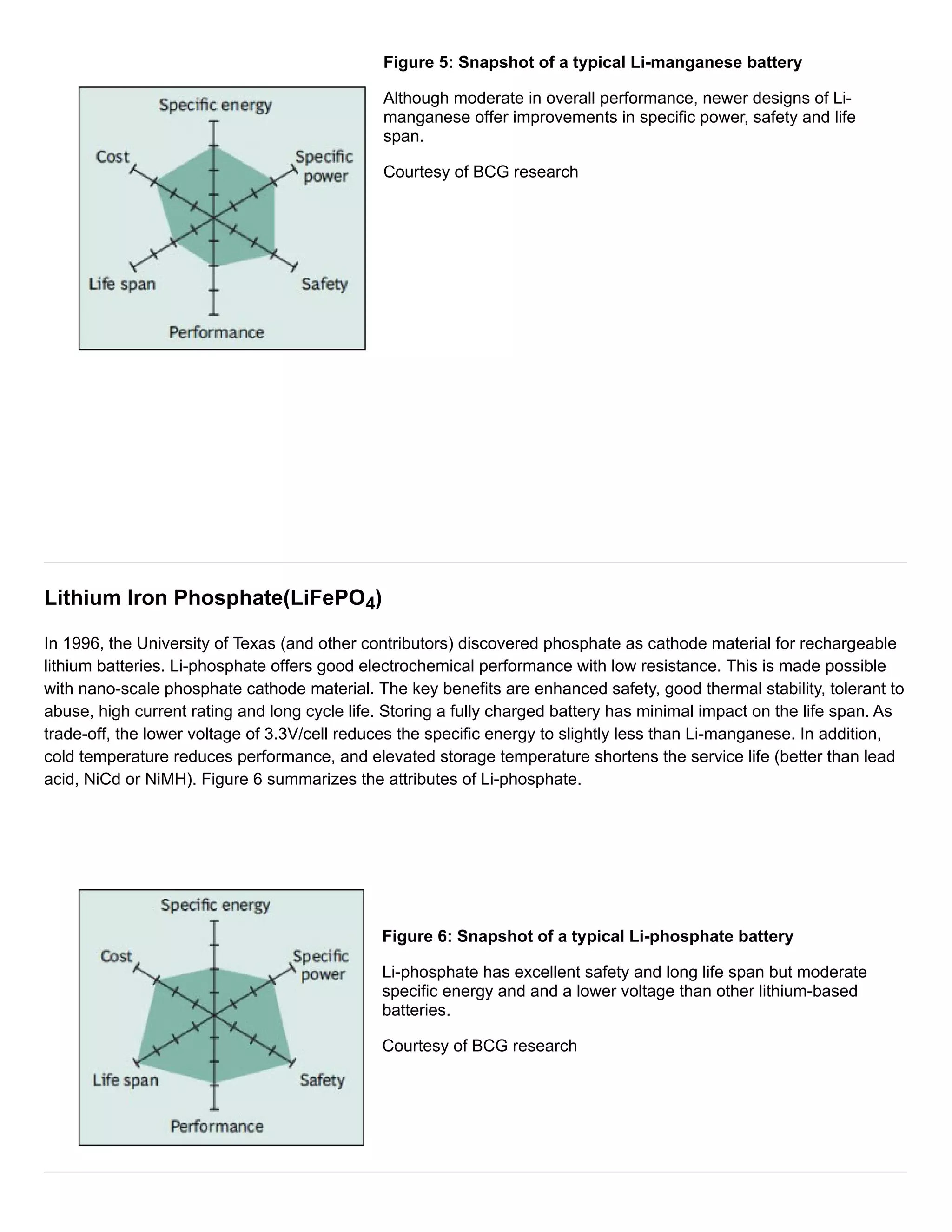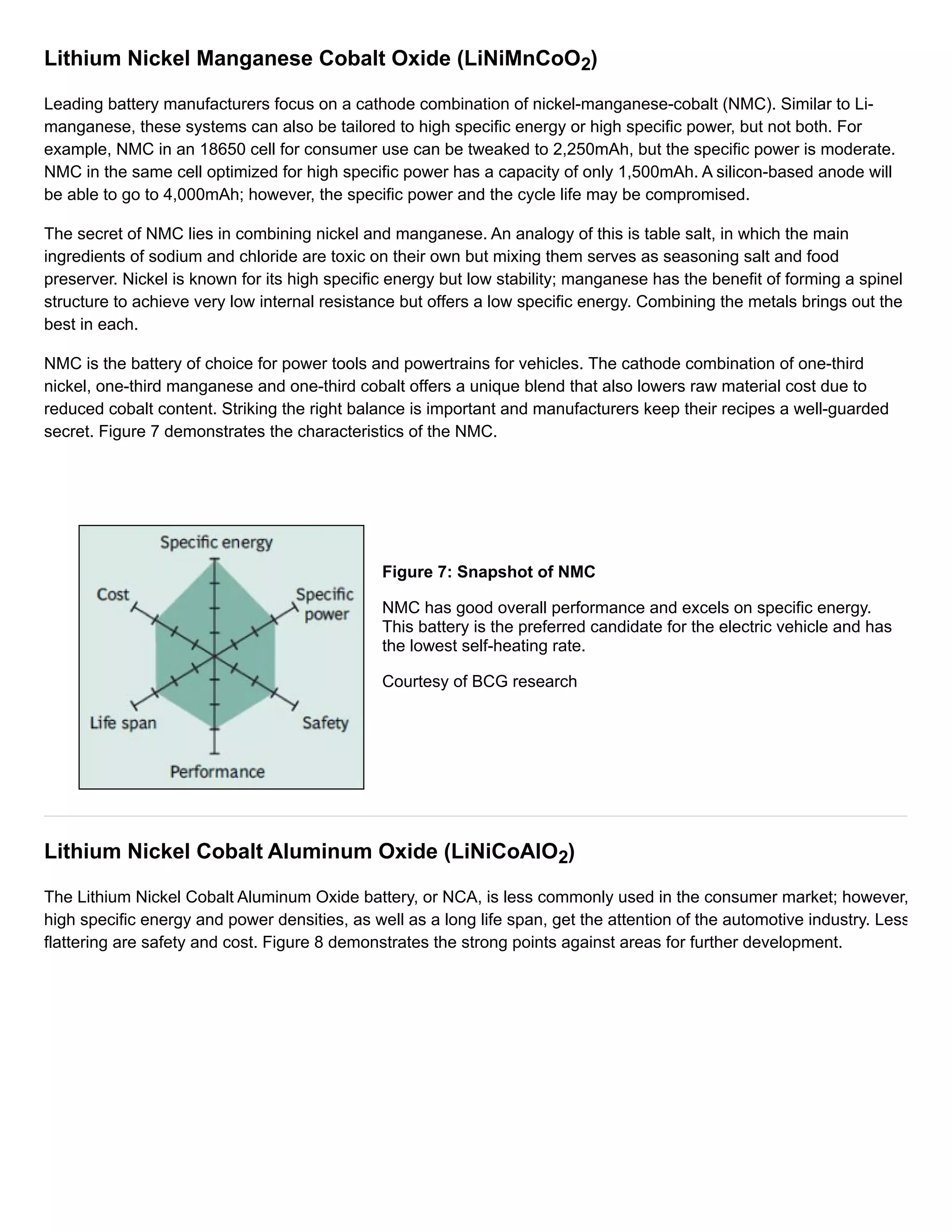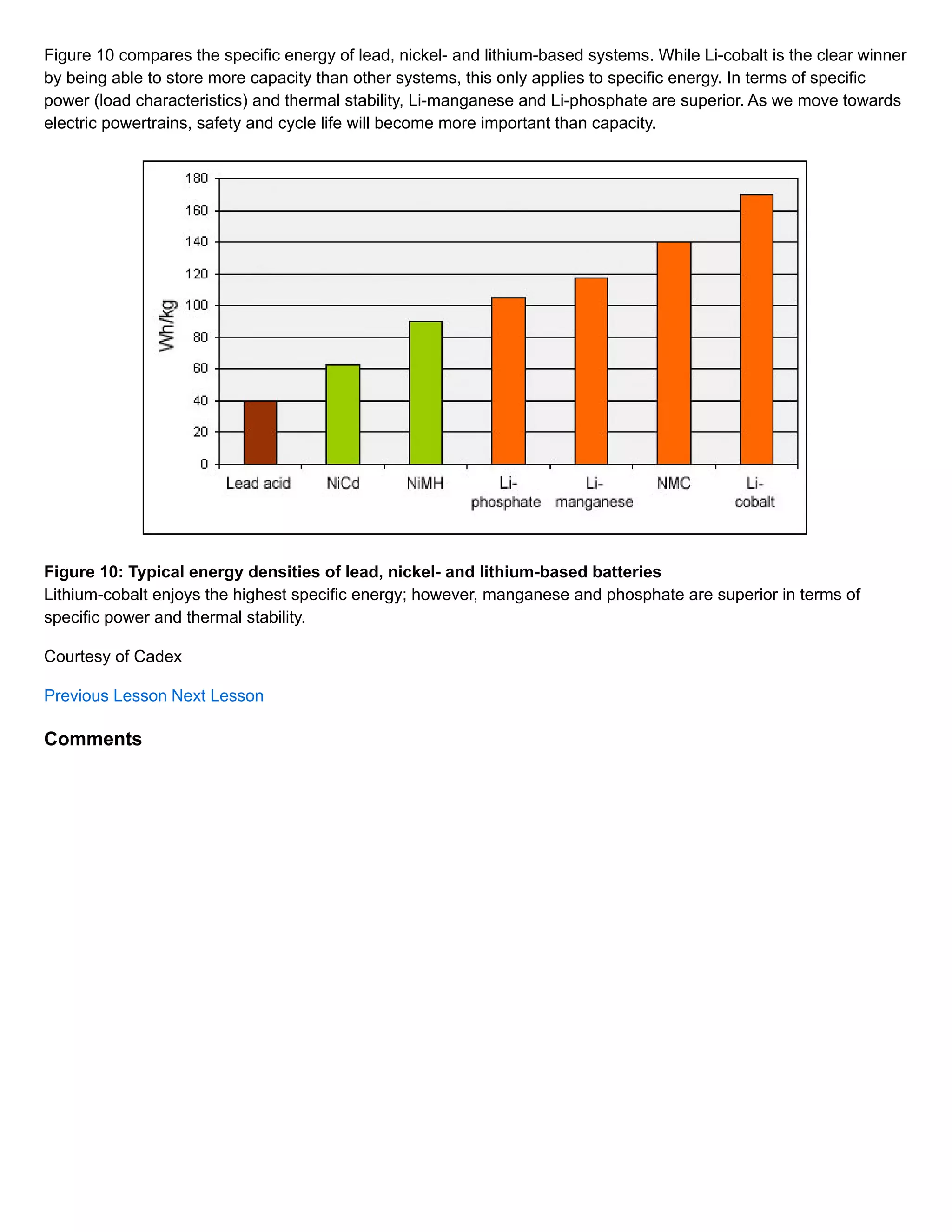The document discusses different types of lithium-ion batteries that vary in their cathode materials. It provides the chemical names, abbreviations, and characteristics of six common lithium-ion batteries: lithium cobalt oxide (LiCoO2), lithium manganese oxide (LiMn2O4), lithium iron phosphate (LiFePO4), lithium nickel manganese cobalt oxide (LiNiMnCoO2), lithium nickel cobalt aluminum oxide (LiNiCoAlO2), and lithium titanate (Li4Ti5O12). Each battery type has different strengths and weaknesses in terms of specific energy, specific power, safety, temperature performance, lifespan, and cost. Lithium cobalt
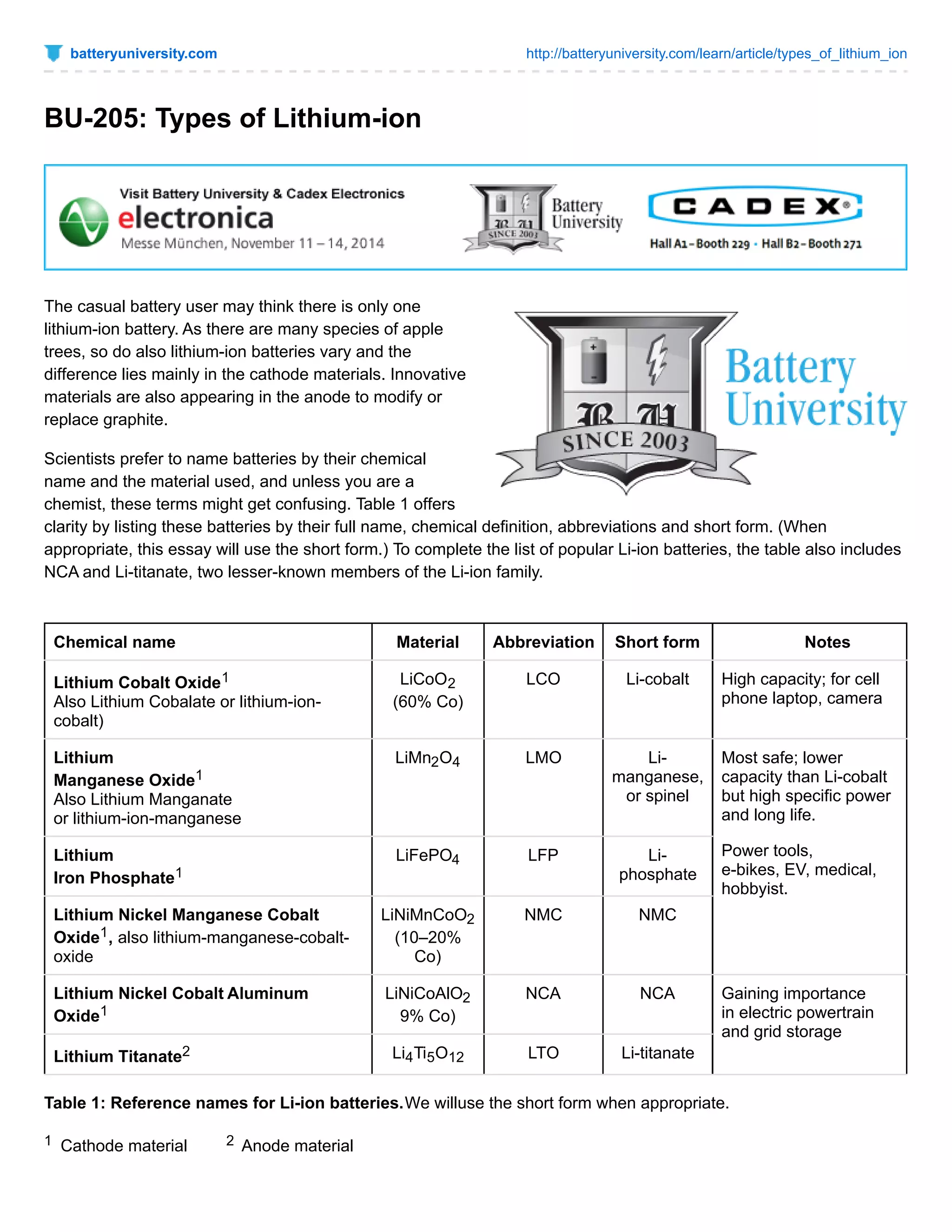
![To learn more about the unique characters and limitations of the six most common lithium-ion batteries, we use spider
charts and look at the overall performance. We begin with Li-cobalt, the most commonly used battery for high-end
consumer products, and then move to Li-manganese and Li- phosphate, batteries deployed in power tools, and finally
address the newer players such as NME, NCA and Li-titanate.
Lithium Cobalt Oxide(LiCoO2)
Its high specific energy make Li-cobalt the popular choice for cell phones, laptops and digital cameras. The battery
consists of a cobalt oxide cathode and a graphite carbon anode. The cathode has a layered structure and during
discharge lithium ions move from the anode to the cathode. The flow reverses on charge. The drawback of Li-cobalt is
a relatively short life span and limited load capabilities (specific power). Figure 2 illustrates the structure.
Figure 2: Li-cobalt structure
The cathode has a layered structure. Duringdischarge the
lithium ions move from the anode to the cathode; on charge
the flow is from anode to cathode.
Courtesy of Cadex
Li-cobalt cannot be charged and discharged at a current higher than its rating. This means that an 18650 cell with
2,400mAh can only be charged and discharged at 2,400mA. Forcing a fast charge or applying a load higher than
2,400mA causes overheating and undue stress. For optimal fast charge, the manufacturer recommends a C-rate of
0.8C or 1920mA. [BU-402, What is C-rate?] The mandatory battery protection circuit limits the charge and discharge
rate to a safe level of about 1C.
Figure 3 summarizes the performance of Li-cobalt in terms of specific energy,or capacity; specific power,or the ability
to deliver high current; safety; performanceat hot and cold temperatures; life spanreflecting cycle life and longevity;
and cost.The hexagonal spider web provides a quick and easy performance analysis of the battery characteristics.
Figure 3: Snapshot of an average Li-cobalt battery
Li-cobalt excels on high specific energy but offers only moderate
performance specific power, safety and life span.
Courtesy of Cadex](https://image.slidesharecdn.com/typesoflithiumion-140929215608-phpapp02/75/Types-of-lithium-ion-2-2048.jpg)
